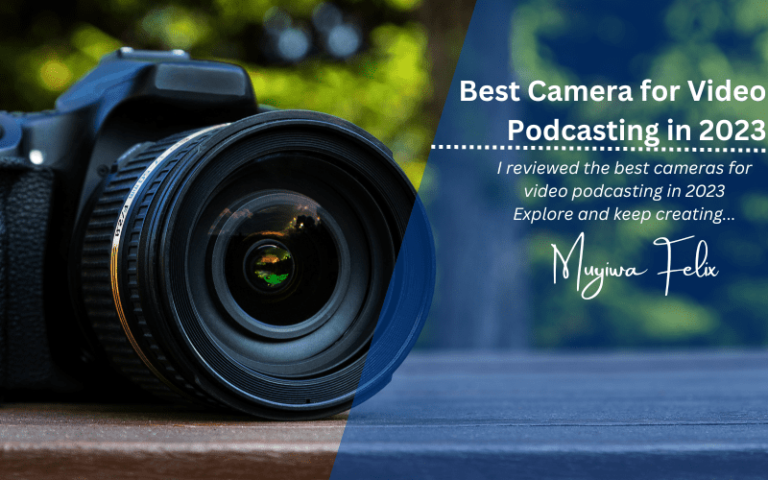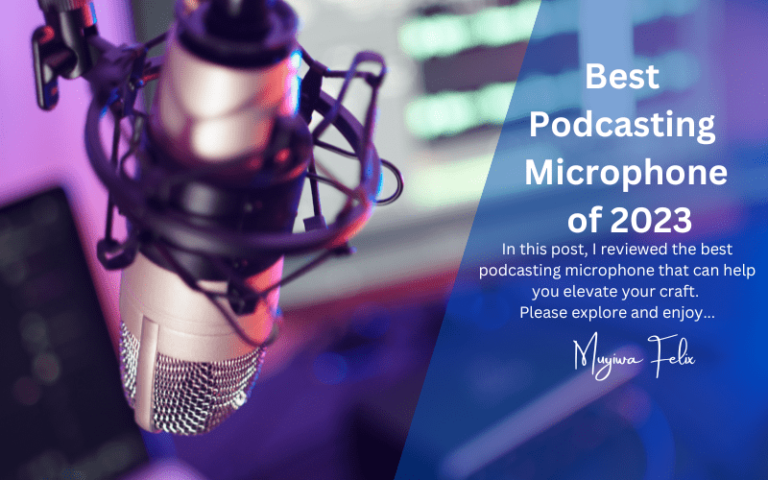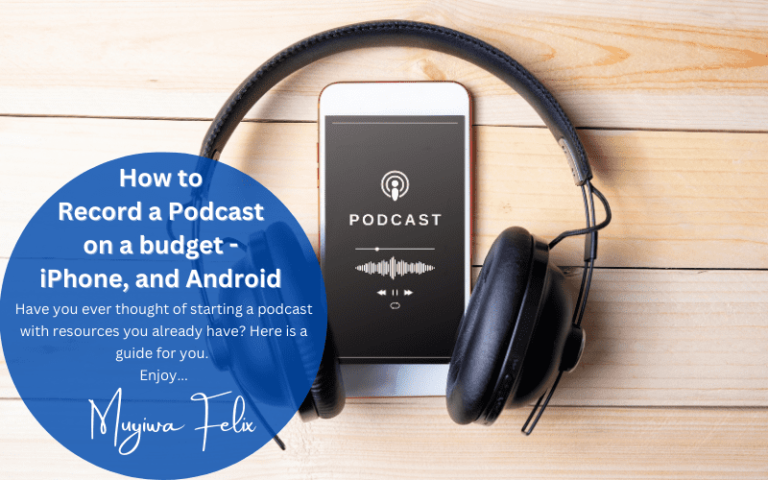Video Podcasting – Maximizing your earning potential in 2024
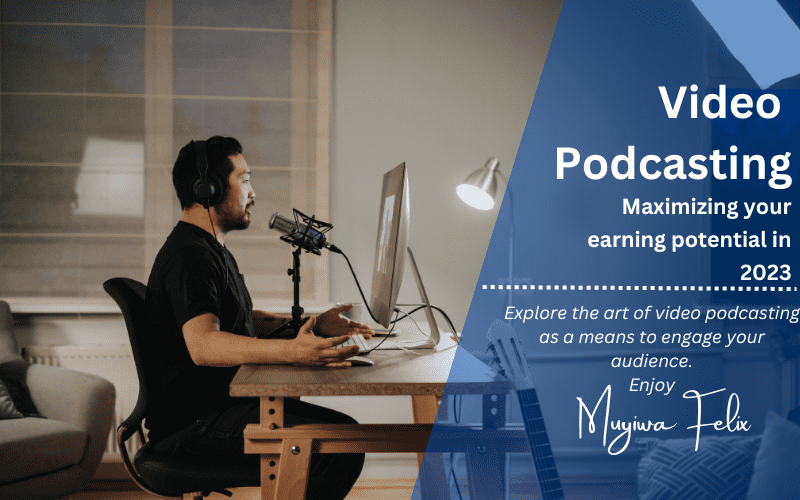
Video podcasting as an art is not far from audio podcasting. It is a form of podcasting that involves creating and distributing video content in a serialized format, similar to traditional audio podcasts.
In recent years, the popularity of video podcasts has grown significantly, with many content creators leveraging on the growing interest in audiovisual content. Many creators have used this medium to share their thoughts, expertise, and experiences with a wider audience.
Differences between Audio and Video Podcasting
Although not much, audio and video podcasts have a few key differences. One of the obvious differences is the visual element – video podcasts typically include video footage of the host(s) or other elements, such as slides or screen recordings, in addition to audio. Creating video podcasts is an intelligent way to add an extra layer of engagement and visual interest to your content.
Another important difference is the equipment and setup required for video podcasting. While audio podcasts can often be recorded with just a microphone and software, video podcasts typically require more specialized equipment, such as a webcam or video camera, lighting, and a suitable backdrop.
Especially with the quality of content on social media these days, you need good equipment to stand out or at least be at par with fellow content creators. Investing in quality equipment and setting up a professional-looking recording space to ensure the best possible audio and visual quality for your video podcast is important.
The good part is that you can easily rip the audio from your video recording, edit it, and upload it for your audio podcast. This saves you time and energy and lets you do more with less.
Benefits of Video Podcasting
One of the major benefits of video podcasting is the ability to connect with your audience in a more personal and interactive way. With video, you can show your facial expressions and body language, which can help to better convey your message and create a more engaging experience for your listeners. Video podcasts can also be more interactive, allowing you to take live questions or comments from your audience or to incorporate other interactive elements such as polls or quizzes.
Another advantage of video podcasting is the potential for increased visibility and reach. Many people prefer to watch video content over listening to audio, and video content tends to perform better on social media platforms. This means that your video podcast has the potential to reach a wider audience and attract more subscribers.
Thirdly, more reach for your content means higher earning potential and more money in your account. By being able to upload your video podcast on multiple platforms like youtube, Spotify podcast, and Vimeo, you will definitely increase your chances of earning more.
Challenges of Video Podcasting
One of the key challenges of video podcasting is the time and effort required to produce and edit high-quality video content.
Creating video podcasts can be more time-consuming than audio podcasts, as it requires setting up the recording space, filming and editing the footage, and possibly animating or adding other visual elements.
It’s important to have a clear idea of the content and format of your video podcast in advance and to plan out your episodes to make the most efficient use of your time.
Secondly, the technical know-how required for video podcasting is a potential challenge. It is the same technical skills and knowledge required to produce and edit video content.
While many software options are available for video editing, it can take time and practice to become proficient at using these tools. It’s worth considering taking a course or investing in some tutorials to help you get started with video podcasting.
Despite the challenges, video podcasting can be a rewarding and enjoyable way to share your message and connect with your audience.
Whether you’re looking to share your expertise on a particular topic, document your personal experiences, or simply share your thoughts and ideas, video podcasting can be a powerful and effective medium.
By investing in quality equipment, planning your content carefully, and taking the time to learn the required technical skills, you can create and distribute high-quality video podcasts that engage and inspire your listeners.
My top camera recommendations for recording video podcasts are:
1. Canon EOS M50
The Canon EOS M50 Mark II is a powerhouse of creativity, packed with features designed to meet the needs of all content creators. Boasting an impressive 24.1 Megapixel CMOS sensor and DIGIC 8 image processor along with 4K UHD 24p capability for stellar video quality and 120fps HD slow motion recording, this versatile camera truly offers something for everyone, especially video podcasting.
2. Canon EOS R
Canan RP is the lightest and most compact full-frame Canon EOS digital camera to date. It includes a 26.2 MP CMOS sensor, fast and accurate autofocus, 4K video, and our powerful DIGIC 8 processor for exceptional results, even in low light.
3. Canon EOS Rebel T7
The EOS Rebel T7 camera has everything it takes! Sporting a massive 24.1 Megapixel CMOS sensor, fast autofocus, and smooth wireless connectivity, this powerhouse can help take your video creations from amateurish to professional in no time – all while being ridiculously easy to operate too!
You can also read the following related posts:
- Best Podcasting Headphones
- Best Podcasting Microphones and Boom Arms
- Best Podcasting Boom Arms
Best video podcast software
The software recommended below are most especially applicable when video podcasting is done remotely with people who are not in the same place as you.
In cases where all participants are in the same place, and you want to record a video podcast, you have to fire up your camera, set up your audio device, set up your recording software, put on your headphone, and start speaking into the microphone. Simple, isn’t it? Easy-peasy!
So, let’s get to it. The following is a list of the best software suitable for video podcasting remotely.
1. Riverside.fm
Riverside is arguably the industry leader when it comes to recording both audio and video podcasts. With Riverside.fm, you can record high-quality 4K videos and uncompressed 48 kHz audio for an optimum podcast experience.
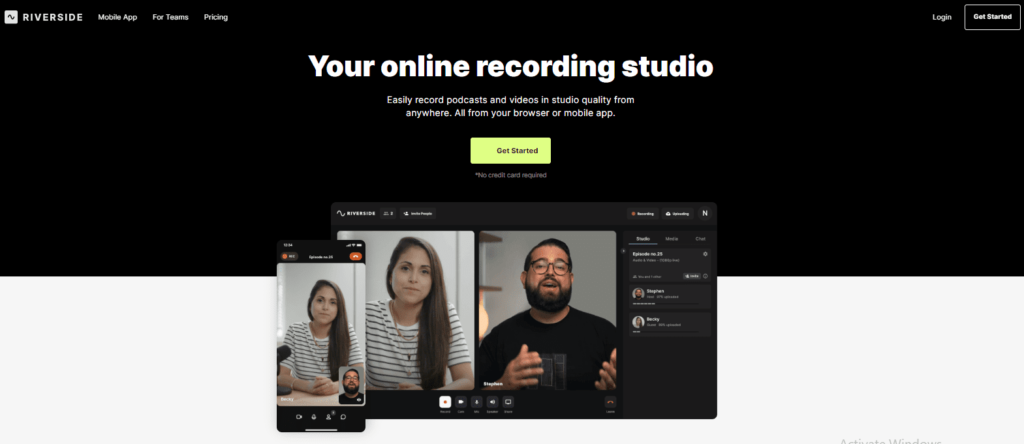
With its remote functionality, you can easily invite up to 7 guests onto your recording from any location, giving a clear sound quality free of background noise across the board.
Automated tools such as Magic Editor provide additional support when creating content; split long recordings into shorter clips that are easy to share while still having access to individual guests’ segments separately via advanced editing software if required.
Plus, extra features like transcription services, live streaming capability & Shopify integration make this platform one of the most comprehensive available today!
Riverside.fm Pricing
Riverside.fm has a free plan. When billed annually, the pricing goes thus
- Standard option – $15 per month
- Pro plan – $24 per month
- Enterprise – on request
2. Squadcast.fm
Squadcast.Fm is one of the best podcasting software for recording and editing podcasts. It supports both video and audio components and can accommodate up to 10 participants per recording. It also has a signature feature that allows progressive recording and auto-saves recordings, so nothing is ever lost.
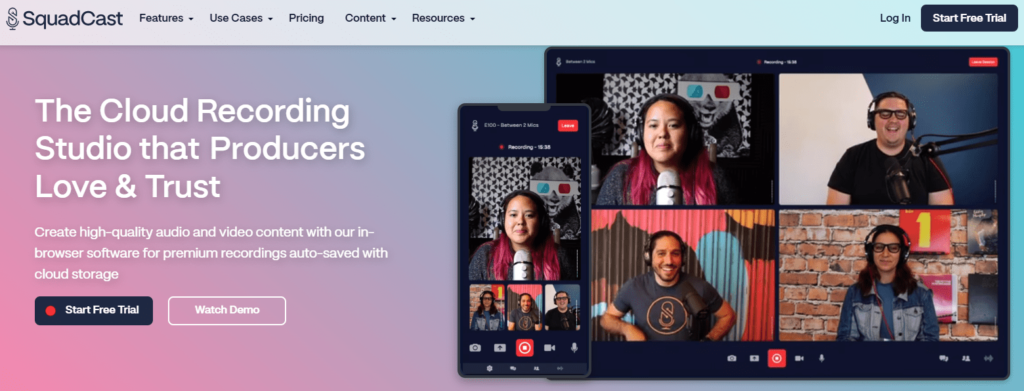
Squadcast.Fm is user-friendly and makes editing a breeze. Recordings can be made and stored on any local device, while cloud storage provides an extra layer of protection. This makes it easy to review and edit the podcast before it is published. Additionally, the software allows for collaboration between multiple participants, making collaboration and communication easier.
Squadcast.fm is a great choice for anyone looking for a reliable and efficient podcasting solution. It is intuitive and easy to use, and its features make it the perfect tool for creating engaging and professional podcasts. Whether you’re a beginner or an experienced podcast creator, Squadcast.fm will provide you with the tools you need to create an amazing podcast.
Squadcast.fm Pricing
Squadcast.fm offers at least 7 days free for customers to check out the software’s features. The monthly/annual plans go thus:
- Indie – $20 per month
- Pro – $40 per month
- Studio – $80 per month
- Enterprise – Contact the sales team
3. Zencastr
Zencastr is an innovative solution for podcasters who mean business. It’s a powerful remote recording platform that provides high-definition audio and video quality.
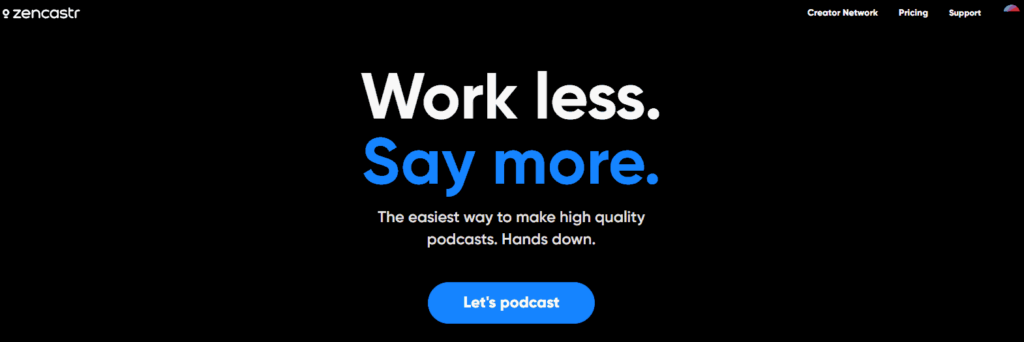
With up to 11 guests supported and cloud backup of recordings, it offers all the features needed in one intuitive package – from recording sessions to editing and publishing with ease!
From professional production crews pushing boundaries on content creation to hobbyists honing unique voices across social media platforms, Zencastr is helping make great podcast moments accessible worldwide.
Zencastr has a free option with limited features. When paid annually, the plans go thus.
- Professional – $18/month
- Growth – $45/month
The other software used for video podcasting are traditional apps like Zoom and Skype. Even though Skype and Zoom have been used for many years, the above-listed software are great improvements over them and have been specifically designed to overcome their limitations.
READ: BEST PODCASTING SOFTWARE TO RECORD AND EDIT YOUR SHOWS IN 2023
Best software for video podcasts recorded in-person.
Here are some of the best software options for editing your video podcast, along with their key features:
1. Adobe Premiere Pro
Adobe Premiere Pro is a professional video editing software widely used by filmmakers and video editors. It offers a range of features, including support for a wide range of video formats, multiple audio tracks, and advanced color grading tools. Premiere Pro is powerful software, but it can be complex to learn and may not be the most suitable for beginners.
Final Cut Pro is another professional video editing software developed by Apple specifically for Mac users. It offers a range of features, including support for multiple audio and video tracks, advanced color grading tools, and integration with other Apple products such as iCloud and Motion. It is one of the leading software mostly used by video editors, and it is perfectly suitable for editing your video podcast, especially if you use a Mac. It is a paid software, but you can enjoy a 90-day free trial period.
Avid Media Composer offers a free version with basic features suitable for a beginner’s video podcast editing needs. Avid Media Composer is a professional video editing software widely used in film and television. It offers advanced features such as support for multiple audio and video tracks, advanced color grading tools, and integration with other Avid products. Higher pricing tiers offer more functionalities.
Lots of creators are drawn to DaVinci Resolve because it is free. Davinci Resolve Studio, which is suited to provide advanced functionalities, especially for team collaboration, sells for a $295 one-time fee. It is a professional video editing software that is widely used for color grading. Davinci Resolve gives you the advantage of using the same editing software used for some top Hollywood productions. It offers a range of features, including support for multiple audio and video tracks, advanced color grading tools, and integration with other DaVinci products such as Fusion and Fairlight.
iMovie is the default editing software pre-installed on Mac devices. It is a more beginner-friendly software that offers a range of features. This includes support for multiple audio and video tracks, basic color grading tools, and integration with other Apple products such as iCloud and iPhotos. For your video podcast needs, iMovie offers the basic functionalities needed.
Lightworks is a professional video editing software that is widely used in the film and television industry. It doesn’t matter if you’re a famous Hollywood director or just a YouTuber, Lightworks can help you make your vision come to life, especially your video podcast.
Filmora is a beginner-friendly video editing software that is easy to use and offers a range of features suitable for editing your video podcasts. Filmora is compatible with multiple devices, including tabs, mobiles, and desktop devices. Filmora has a great community and many resources to help beginners succeed.
When choosing video editing software for your podcast, it’s important to consider your experience level and the specific features you need. Some software options are more complex and geared toward professionals, while others are more beginner-friendly and offer a more streamlined workflow. It may be worth trying out a few different options to find the software that best fits your needs and budget.
Frequently Asked Question
Where can I upload my video podcasts?
There are numerous places where you can upload your video podcasts, depending on the type of content you have created. If you want to reach a large audience, many people suggest uploading your videos to YouTube, as it has one of the largest user bases and is already well-known for hosting videos.
Additionally, other hosting services, such as Vimeo or Dailymotion, may be better suited to your needs. Lastly, creating your own website with an integrated media player gives you more control over how users interact with your content. Whichever way you choose, ensure your video podcasts are accessible and shareable to reach their intended audiences.
You can also upload your podcasts on Spotify. Spotify offers a range of tools and features to help podcasters get their content out there. When uploading your podcast to Spotify, you will need to provide artwork, a description, and an RSS feed URL. Once Spotify approves your podcast, it will be available for others to discover and listen to.
To upload your video podcasts on Spotify, you have to create an account on Anchor (Spotify’s free podcast platform), upload your finished video file, input the episode title and description, create polls, and upload cover art. Click publish, and that’s it. Share your podcast link on your social media platforms. With this done, you are ready to launch your video podcast.
Should podcasts be audio or video?
Podcasts can be either audio or video. It depends on the type of content you want to create and how the audience prefers to consume it. Some people prefer listening to podcasts, while others prefer watching videos. Ultimately, it is up to the creator to decide which format best suits their goals and objectives.
What is video podcasting?
Video podcasting is creating and distributing video content as audio or video files. This content can include interviews, tutorials, news updates, comedy sketches, and other forms of digital media. Video podcasting allows viewers to watch or listen to the content when it is convenient for them.
What is the difference between vodcast and vlogging?
Vodcasting and vlogging are both types of video content, but there are some key differences. Vodcasts are usually longer videos distributed as podcasts that focus on a particular topic or theme. They can be recorded live or pre-recorded, and viewers watch the entire episode from start to finish. Vlogging is more informal, with shorter videos often focusing on a single event or story. Vloggers use their style to talk about their experiences, share tips and advice, or show off their skills.
How much do video podcasters make?
Like other creators, the amount of money podcasters make cannot be pegged at a specific figure. The amount of money they make depends on various factors, such as the size and reach of their audience, the type and number of sponsorships they receive, and any merchandise or other products they sell. Some video podcasters may make very little money, while others can generate significant income.
Can you make money from a video podcast?
Yes, you can make money from a video podcast. You can monetize your podcast through affiliate marketing, sponsorships, donations, and paid subscriptions. Additionally, you can sell merchandise related to your show or create video tutorials and classes related to the topics discussed in your show.
Conclusion
Making video podcasts is the quickest way to maximize your content creation effort. You can upload your video podcast on multiple platforms, increasing your reach and earning potential. Creating video podcasts may require more equipment, like a camera, video editing laptop, and video editing software. In the long run, it is worth it, and I encourage you to start your video podcast.
Do you have an opinion about making video podcasts? Drop your opinion in the comment section. I read and respond to messages personally.
Further Reading
- How to record a podcast on a budget
- Best Podcasting Microphones
- Best Podcasting Cameras
- Best Podcasting Headphones
- Best Podcasting Boom Arms

Ogunjobi Oluwamuyiwa Felix preferred to be called Muyiwa Felix, is a personal finance coach and Insurance advisor. He creates content that addresses the core of personal finance in Canada, the United States, and the world at large. Daily, he meets up with clients who are interested in financial risk management, income protection, wealth-building, retirement planning, and tax-efficient investing strategies.

